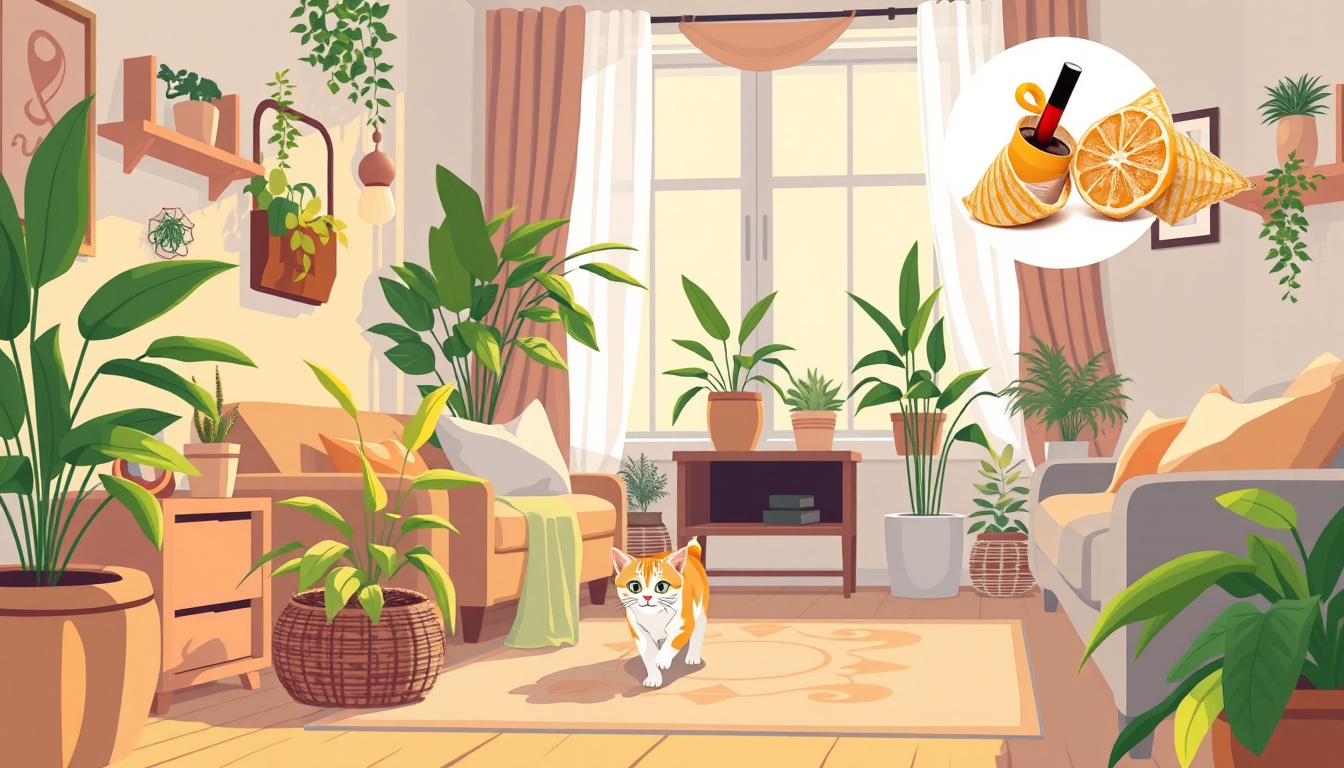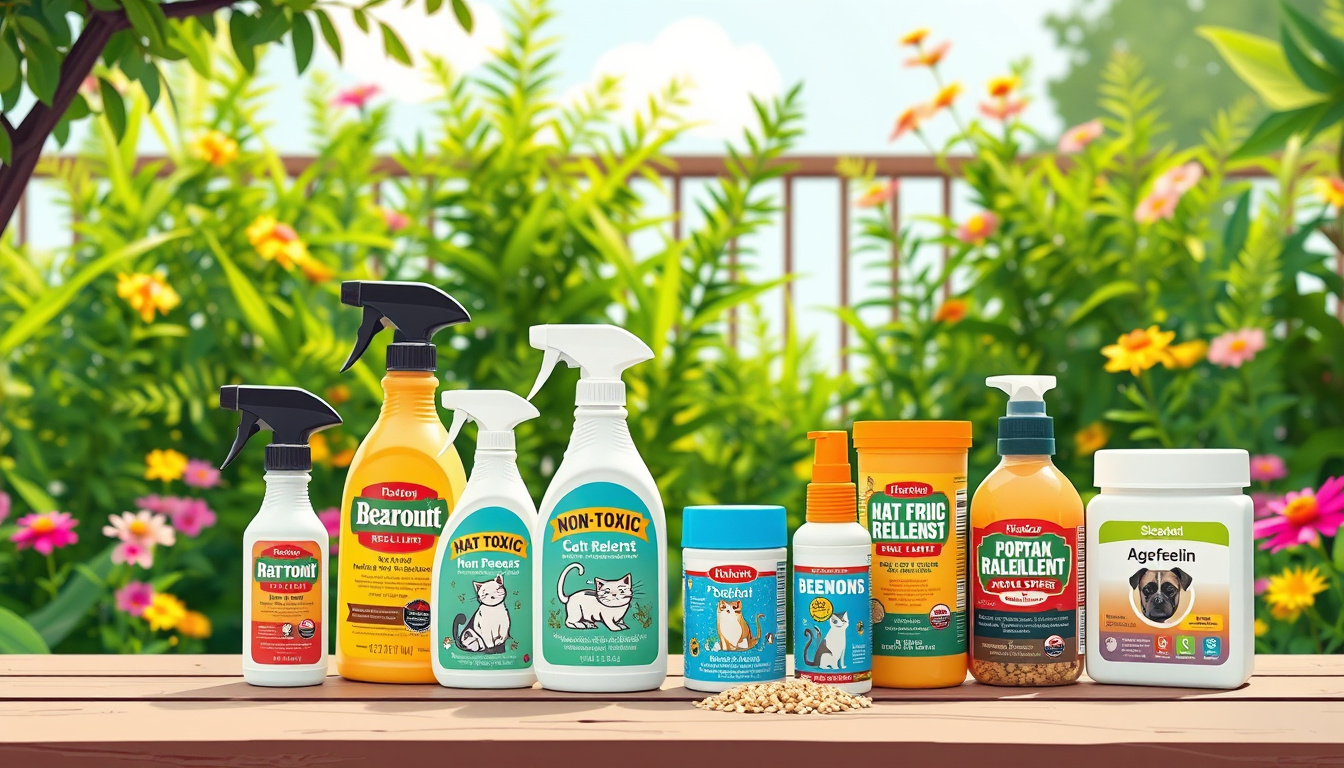As a cat owner, creating a harmonious living space is essential, not just for your feline friends but for the entire household. While you may adore your cats, they sometimes engage in behaviors that are less than desirable—scratching furniture, chewing on houseplants, or invading certain areas. To address these challenges while ensuring a safe environment, non-toxic cat repellents offer an effective solution. In this article, we’ll explore the importance of non-toxic cat repellents, common ingredients, DIY solutions, popular commercial products, and application techniques that will promote a peaceful coexistence between you and your furry companions.
Make your car happy and prevent spraying now!
Key Takeaways
- Non-toxic cat repellents are essential for maintaining a safe home environment for both pets and humans.
- Common ingredients in non-toxic repellents include essential oils and natural substances that deter cats without causing harm.
- DIY solutions can be effective and cost-efficient for creating your own non-toxic cat repellents.
- There are several commercially available non-toxic cat repellents that provide reliable options for pet owners.
- Proper application techniques are crucial for maximizing the effectiveness of non-toxic cat repellents.
Understanding the Importance of Non-Toxic Cat Repellents
When it comes to keeping your home and garden free from unwanted feline visitors, understanding the importance of non-toxic cat repellents can make all the difference. These safe and humane alternatives to chemical repellents are essential not only for protecting your plants and belongings but also for ensuring the well-being of your pets and the environment. Non-toxic cat repellents, formulated from natural ingredients, help deter cats without harming them or their delicate senses. This is particularly crucial for pet owners who wish to safeguard their furry companions from harsh chemicals while maintaining a peaceful coexistence with neighborhood cats. By choosing non-toxic solutions, you are making an environmentally responsible choice that promotes a healthier habitat for all creatures, and you’ll find various effective options available, ranging from citrus-based sprays to essential oil blends that are pleasing to humans yet unappealing to cats.
Common Ingredients in Non-Toxic Cat Repellents
When it comes to keeping your home and garden safe from unwanted feline visitors, selecting the right products is crucial. Non-toxic cat repellents have gained popularity not only for their effectiveness but also for their safety for pets and humans alike. Common ingredients found in these repellents include natural essential oils, such as citronella, eucalyptus, and peppermint, which mask scents that attract cats while providing a strong deterrent. Vinegar and cayenne pepper are also popular choices, as their strong odors and spicy flavors create an unpleasant environment for curious cats. Additionally, some non-toxic cat repellents utilize citrus extracts, as many felines are naturally averse to citrus scents. Understanding these common ingredients can help you choose the right non-toxic cat repellent for your needs, ensuring a harmonious living space for you and your pets.
'The greatness of a nation and its moral progress can be judged by the way its animals are treated.' - Mahatma Gandhi
DIY Non-Toxic Cat Repellent Solutions
If you're a cat owner concerned about keeping your feline friends safe while protecting your garden or home from unwanted cat behaviors, exploring DIY non-toxic cat repellent solutions can be a game-changer. Non-toxic cat repellents are an excellent choice because they are safe for your pets, children, and the environment. One common method is to use citrus scents, as cats tend to dislike the smell of lemon or orange. You can create a simple spray by mixing water with lemon juice and a few drops of natural dish soap, then spraying it around the areas you wish to protect. Another effective option is using essential oils, particularly eucalyptus or lavender; however, ensure they're diluted properly to prevent any skin irritation. Additionally, making use of herbs like rosemary or mint not only adds a pleasant fragrance to your home or garden, but can also deter cats from frequenting those areas. By utilizing these DIY non-toxic cat repellents, you can create a harmonious space that both you and your pets can enjoy.
Make your car happy and prevent spraying now!
Top Commercial Non-Toxic Cat Repellents
When it comes to keeping your home cat-friendly while also protecting your plants and furniture, exploring non-toxic cat repellents is essential. Many pet owners often struggle with finding an effective solution that is safe for their furry friends. Thankfully, the market is now flooded with top commercial non-toxic cat repellents that cater to these concerns. These repellents utilize natural ingredients that deter cats without harming their health or well-being. Products like vinegar-based sprays, citrus-scented solutions, and herbal deterrents present a humane way to keep cats at bay without resorting to harmful chemicals. Additionally, many of these products are easy to use—just apply them in areas where you want to deter feline visitors, such as gardens or countertops. Opting for non-toxic cat repellents not only supports a healthy environment for your pets but also ensures that you are making responsible choices as a pet owner.
Application Techniques for Maximum Effectiveness
When looking for ways to keep cats away from certain areas of your garden or home, it’s essential to consider effective application techniques for non-toxic cat repellents. First, ensure that the repellent is applied in a consistent manner; layering the product can enhance its effectiveness. For liquid non-toxic cat repellents, spraying directly onto surfaces that cats frequently visit may create an effective barrier that deters them. You can enhance effectiveness further by combining these repellents with physical barriers, such as fencing or netting, which can keep curious felines at bay. For granular non-toxic cat repellents, spreading the product around the perimeter of the area you wish to protect can create a natural deterrent zone. Additionally, reapplying these repellents after rain or watering your plants is crucial, as moisture can dilute their potency. By understanding and implementing these application techniques, you can create a safe and welcoming environment for both your plants and your feline friends.
Frequently Asked Questions
What are non-toxic cat repellents?
Non-toxic cat repellents are products or solutions designed to deter cats from unwanted areas without using harmful chemicals. They are safe for both pets and humans.
Why should I use non-toxic cat repellents instead of traditional ones?
Non-toxic cat repellents are safer for your pets and the environment. Traditional repellents often contain harsh chemicals that can be harmful to cats and other animals as well as children.
Can I make my own non-toxic cat repellent?
Yes! There are many DIY solutions you can create using common household items like vinegar, citrus peels, or essential oils that are safe for use around cats.
What are some common ingredients found in non-toxic cat repellents?
Some common non-toxic ingredients include citrus oils, vinegar, citric acid, and plant-derived essential oils that cats tend to dislike.
How can I apply non-toxic cat repellents effectively?
To maximize effectiveness, apply repellents in areas where you want to deter cats, such as around plants or furniture. Reapply regularly, especially after rain or cleanup.
About
How to stop a cat from spraying offers useful tips and advice on how to stop the undesired and nasty behavior with a fun, proven and effective method that will make your cat love you even more.
Comments
Post a Comment